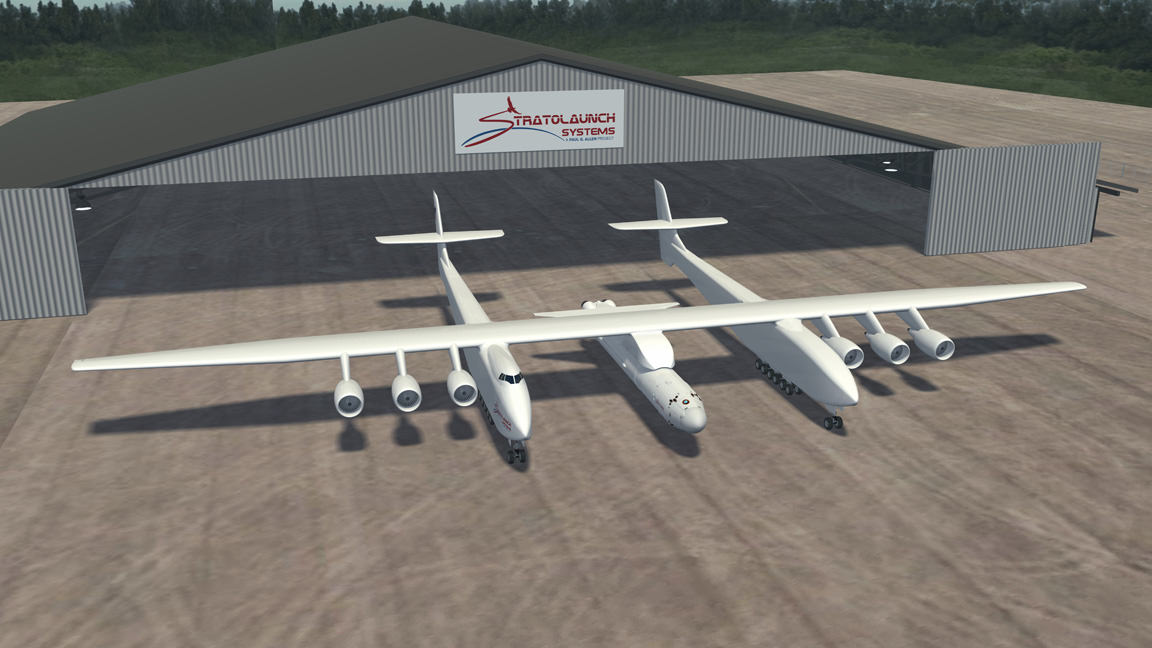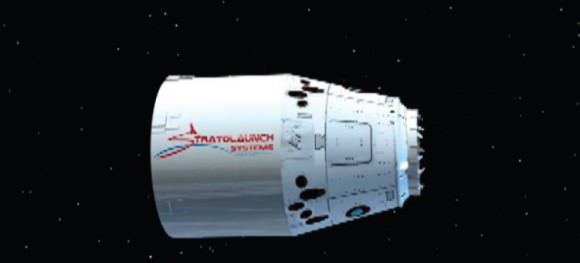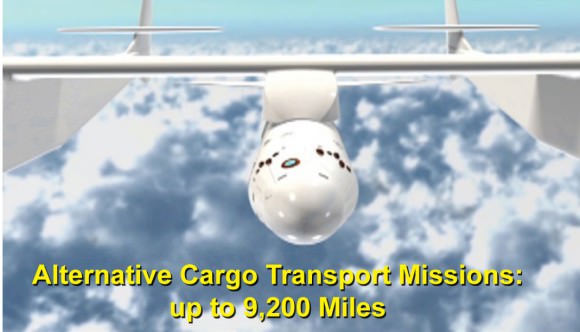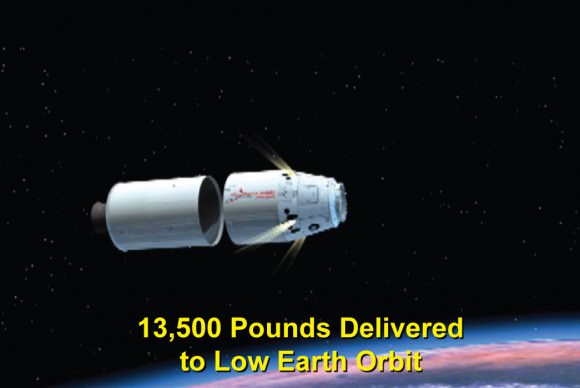A year ago, the high-altitude launch company Stratolaunch flew the world’s largest aircraft. Now, Stratolaunch has revealed the designs of two hypersonic aircraft plus a reusable space plane that will be launched from its giant Carrier Aircraft launch plane. The company hopes to begin test flights of these vehicles by 2022.
Continue reading “Stratolaunch Shows Off its New Hypersonic Testing Vehicle”Revolutionary Air-Launched Commercial Rocket to Orbit Announced by Microsoft Billionaire Paul Allen

[/caption]
A mega quartet of luminaries led by Microsoft co-founder Paul G. Allen and legendary aerospace designer Burt Rutan have joined forces to create a revolutionary new approach to space travel. This new privately funded venture entails the development of a mammoth air-launched space transportation system that aims to dramatically cut the high costs and risks of launching both cargo and human crews to low Earth orbit.
Allen and Rutan are teaming up with Elon Musk, founder of Space Exploration Technologies Corp, or SpaceX, and Michael Griffin, former NASA Administrator, to build the world’s largest aircraft ever flown and use it as a platform to loft a multi-stage SpaceX rocket that will deliver a payload of some 13,500 pounds into earth orbit, about the same class as a Delta II.
Allen and Rutan hope to build upon the spaceflight revolution that they pioneered with the suborbital SpaceShipOne in 2004, which was the first privately funded spaceship to reach the edge of space, and now take the critical next step and actually vault all the way to orbit.
Video Caption: Stratolaunch Systems is pioneering innovative solutions to revolutionize space transportation to orbit.
To accomplish this innovative leap, Allen and Rutan, announced the formation of a new company, funded by Allen, called Stratolaunch Systems at a press briefing today, Dec. 13, held in Seattle, WA. Allen is a billionaire and philanthropist who has funded a host of projects to advance science,
“Our national aspirations for space exploration have been receding,” Allen lamented at the start of the briefing. “This year saw the end of NASA’s space shuttle program. Constellation, which would have taken us back to the moon, has been mothballed as well. For the first time since John Glenn, America cannot fly its own astronauts into space.”
“With government funded spaceflight diminishing, there’s a much expanded opportunity for privately funded efforts.”
Rutan said that Stratolaunch will build a 1.2 million pound carrier aircraft sporting a wingspan of 385 feet – longer than a football field – and which will be powered by six 747 engines on takeoff. The carrier will be a twin fuselage vehicle, like the WhiteKnight developed by Rutan to launch SpaceShipOne.

The 120 foot long SpaceX rocket, weighing up to 490,000 pounds, will be slung in between and dropped at an altitude of about 30,000 feet for the remaining ascent to orbit.
SpaceX will construct a shorter, less powerful version of the firms existing Falcon 9 rocket, which may be either a Falcon 4 or Falcon 5 depending on specifications.
The new launch system will operate from a large airport or spaceport like the Kennedy Space Center, require a 12,000 feet long runway for takeoff and landing and be capable of flying up to 1,300 nautical miles to the payload’s launch point. Crews aboard the huge carrier aircraft will also conduct the countdown and firing of the booster and will monitor payload blasting to orbit.
“I have long dreamed about taking the next big step in private space flight after the success of SpaceShipOne – to offer a flexible, orbital space delivery system,” Allen said. “We are at the dawn of radical change in the space launch industry. Stratolaunch Systems is pioneering an innovative solution that will revolutionize space travel.”
The goal of Stratolaunch is to “bring airport-like operations to the launch of commercial and government payloads and, eventually, human missions,” according to a company statement.
Plans call for a first orbital flight within five years by around 2016. Test flights could begin around 2015.
“We believe this technology has the potential to someday make spaceflight routine by removing many of the constraints associated with ground launched rockets,” said Mike Griffin. “Our system will also provide the flexibility to launch from a large variety of locations.”
Mike Griffin added that the venture is aiming for the small to medium class payload market similar to what has been served by the venerable Delta II rocket, which is now being retired after decades of service.
“NASA’s science satellites could also be lofted by Stratolaunch.”
“At some point this vehicle could loft a crew of say six people,” Griffin stated.
“This is an exciting day,” concluded Allen.
“Stratolaunch will keep America at the forefront of space exploration and give tomorrow’s children something to search for in the night sky and dream about. Work has already started on our project at the Mojave Spaceport.”




